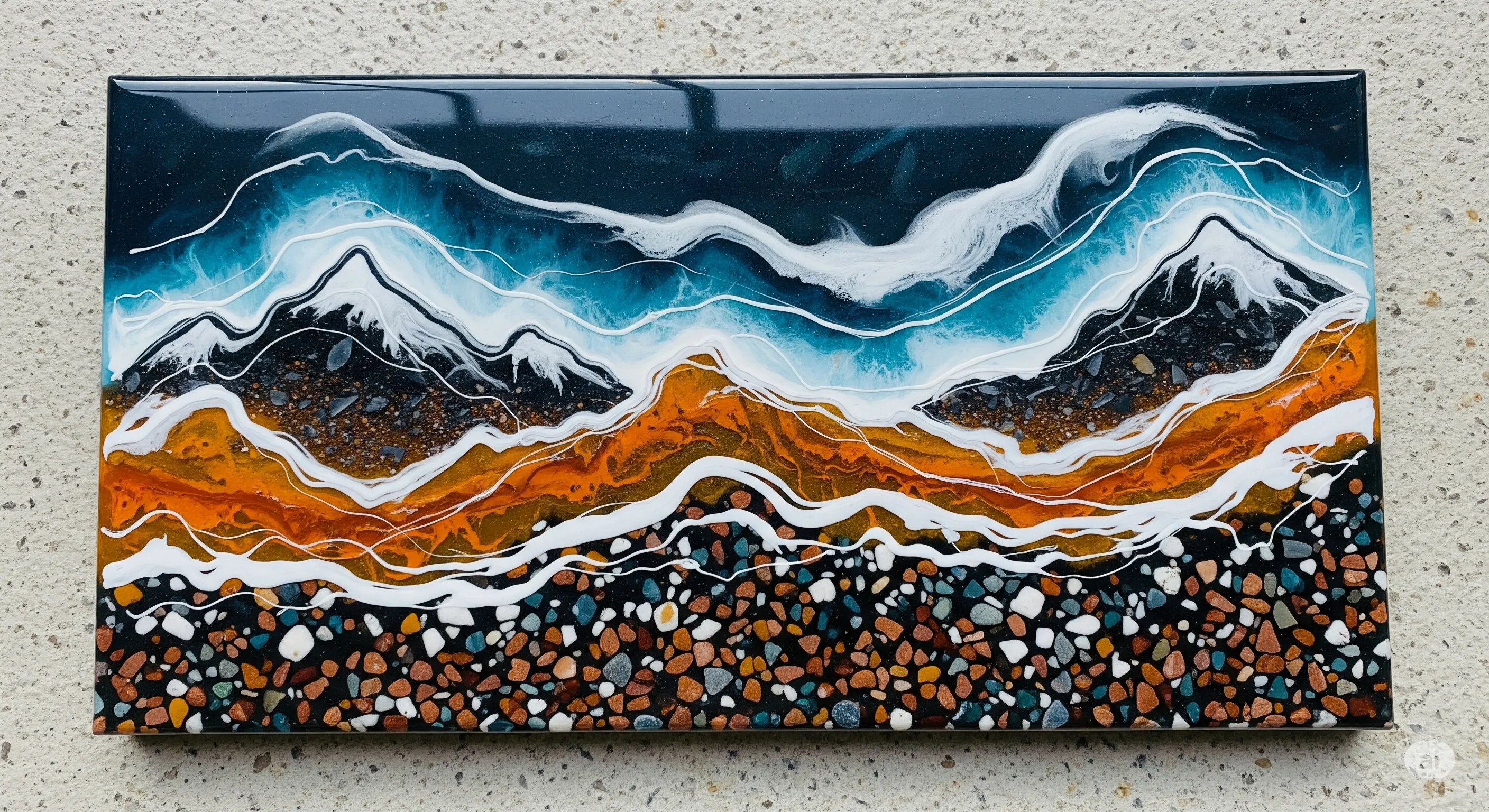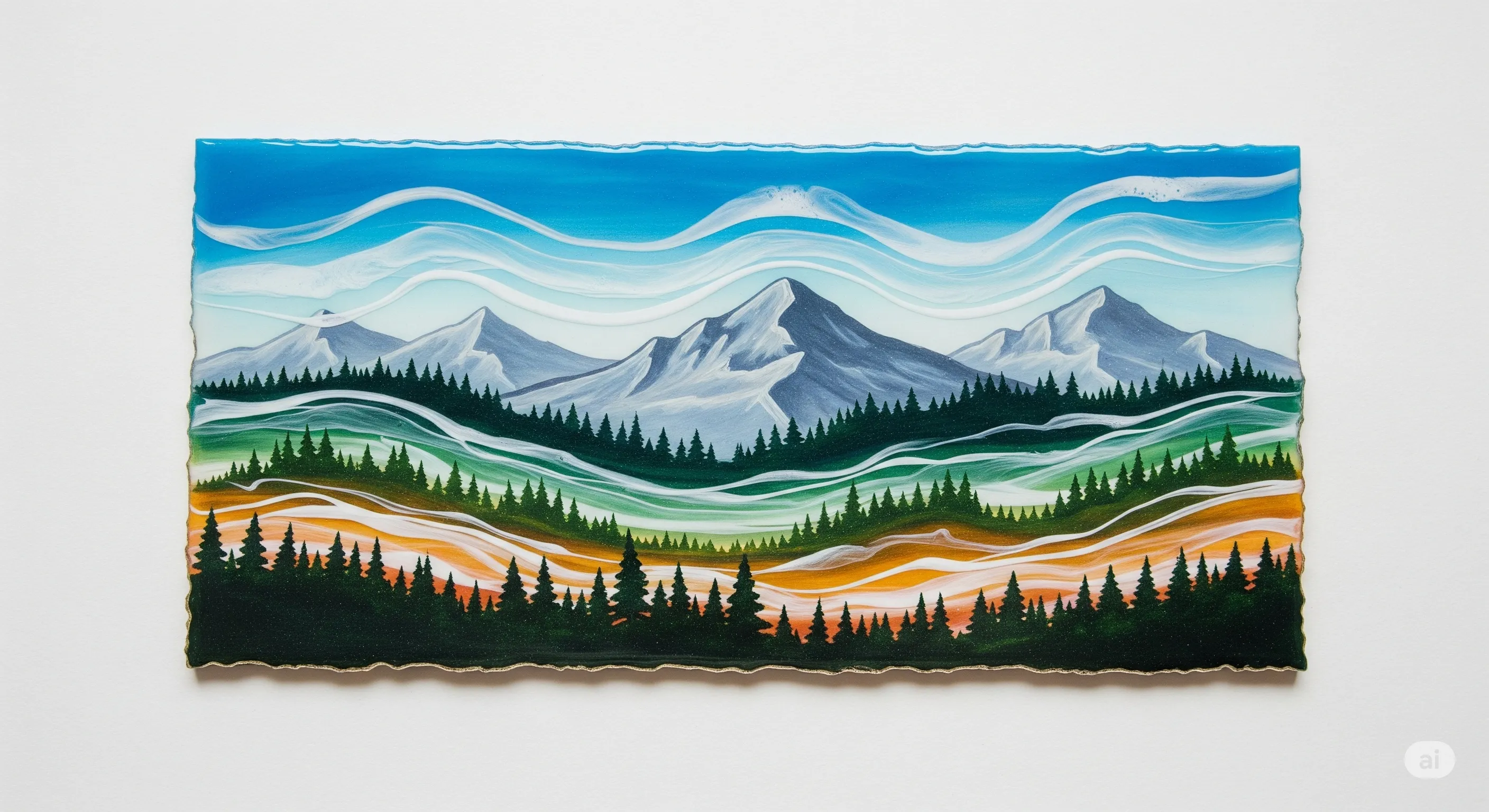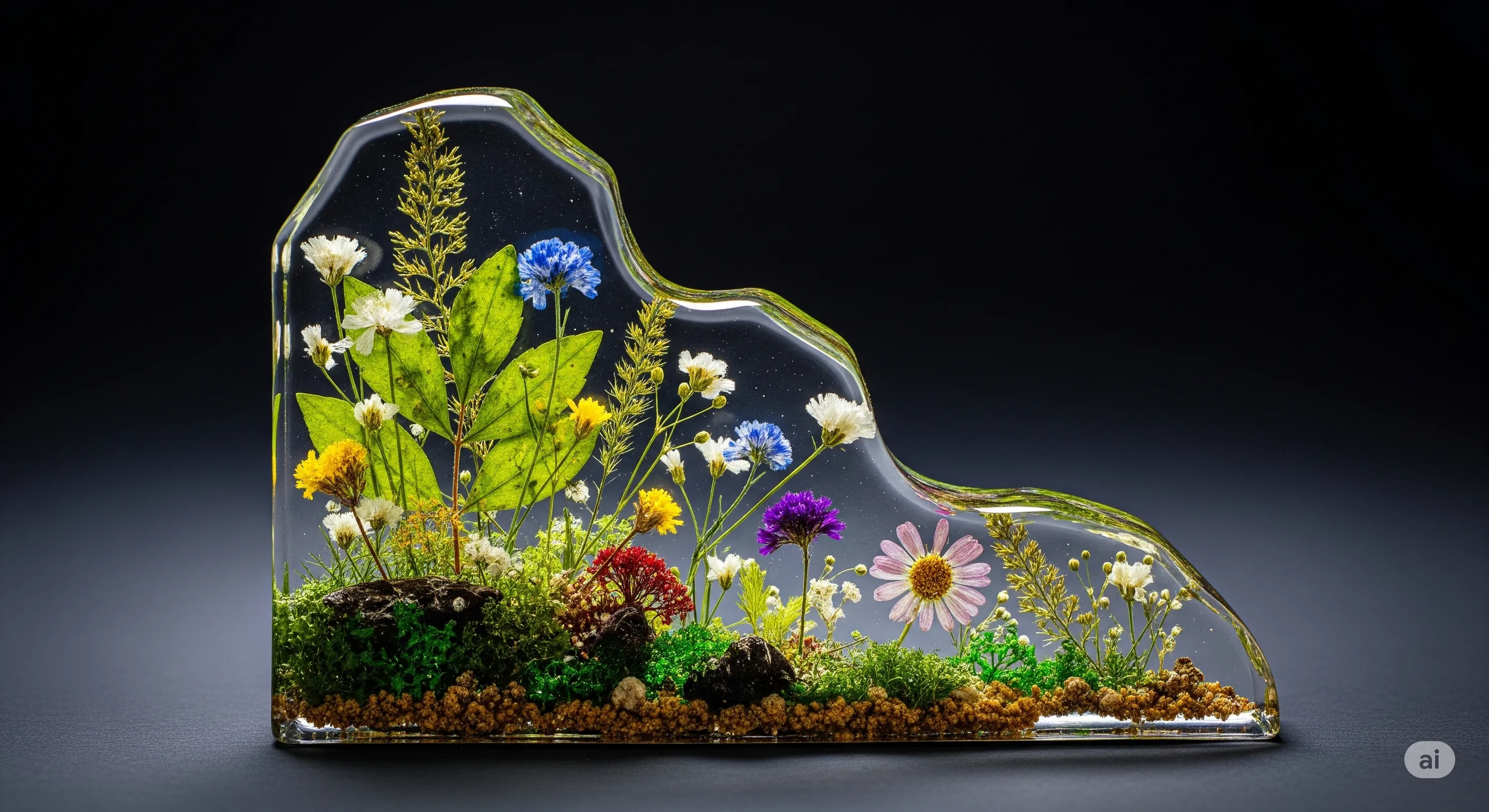Top Epoxy Resin Art Trends in 2025 and How to Master Them
Introduction
Epoxy resin art has taken quite a journey, hasn’t it? If you’ve been part of this creative world for even a year, you’ve probably seen how quickly trends shift. 2025 is shaping up to be the year where less is more, sustainability matters, and function meets beauty. Here are some trends I’ve been seeing (and trying!), along with my tips from the studio.
1. Geode-Inspired Minimalism
Let’s be honest—geode art can sometimes look a bit overdone. This year, artists (myself included) are leaning into cleaner, more intentional designs. Think white spaces, soft color transitions, and thin metallic lines that hint at crystal formations rather than shouting.
How to Do It:
- I switched from agate-shaped molds to simple square panels—it instantly made the piece feel cleaner.
- Instead of 5 colors, I now pick just 2. One dominant, one accent. Less really does feel more elegant.
- I use a gold ink pen for fine details—no thick glitter lines anymore

2. Terrazzo, but with Texture!
I first tried this by accident—crushed some leftover glass, mixed it into resin, and didn’t polish it fully. What came out? A gorgeous terrazzo effect with real texture. Turns out, this rough-yet-stylish finish is everywhere now.
How to Do It:
- Mix in chunky glitter, broken shell pieces, even sand. (Tip: Wash and dry all natural materials first.)
- I pour in layers: one thin clear resin layer, then sprinkle materials, then another clear layer.
- Some areas I sand, others I leave textured—it creates contrast and adds dimension.

3. Eco-Friendly Pigments and Practices
The more resin I used, the more I started thinking about its impact. Now I’ve started sourcing mica powders that are ethically made, and experimenting with plant-based pigments.
How to Do It:
- I stopped using heavy alcohol inks and now try out beetroot and turmeric powders for soft pastels.
- Dutch pours work really well with these sustainable pigments, especially if you keep the resin flow natural.
- Always wear a mask—even if your resin says "non-toxic", the fine pigment particles still float.

4. Preserving Nature—Properly
Pressed flowers in resin? Yes, still trending. But now it’s all about doing it right. No soggy petals, no bubbles trapped under leaves. I’ve had my fair share of ruined pieces—until I learned a few tricks.
How to Do It:
- I use silica gel to dry my flowers. Air drying sometimes works, but only for sturdy leaves.
- Before pouring, I brush on a super-thin resin layer to seal the botanicals.
- I never pour too thick. Doing thin layers lets me control the placement and avoid movement or bubbles.

5. Functional Resin Art is Booming
Gone are the days when resin was just for coasters. I’ve made tabletops, clocks, trays, and even a resin nameplate for my front door. People want beauty they can use.
How to Do It:
- I began with serving trays—added handles and feet, and people loved them.
- Use food-safe resin (always check labels) for kitchen pieces.
- For wall art, I embed dried moss or stones—it makes the piece interactive and natural-looking.

Conclusion
By mastering these resin art techniques, beginners can create stunning and unique resin crafts with ease. Whether you’re into DIY resin jewelry, abstract paintings, or home décor, these methods will bring your ideas to life.

